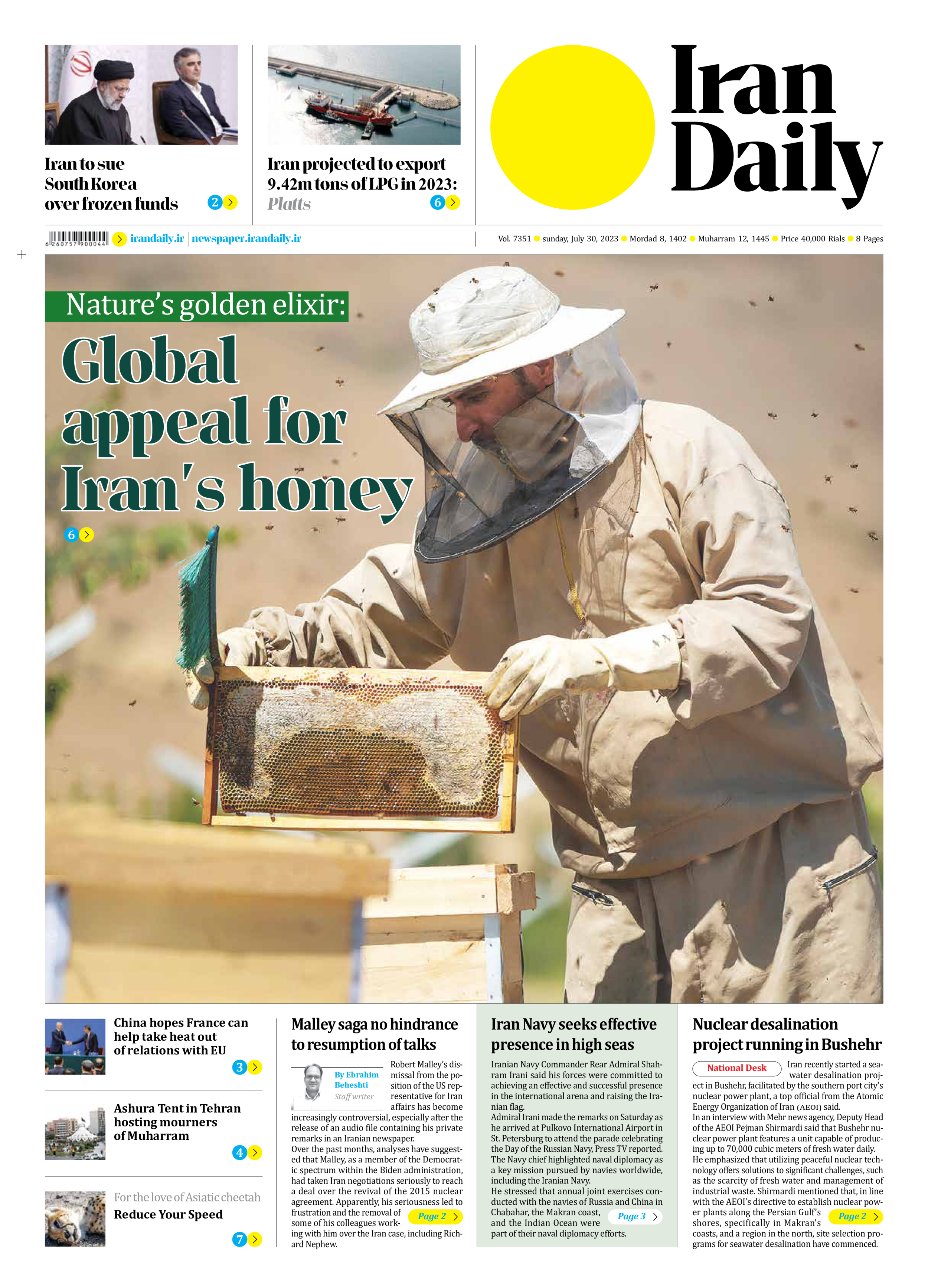
Nature’s golden elixir:
Global appeal for Iran’s honey
By Sadeq Dehqan
Staff writer
Iran, blessed with the majestic Alborz and Zagros mountain ranges, along with a variety of plains and mountainous terrain, boasts an abundance of diverse vegetation. This rich botanical landscape serves as the foundation for the production of a wide array of honeys some with medicinal properties.
Thanks to the remarkable diversity in flora and the varying climates across the country, Iran stands out as a hub for producing some of the finest and most diverse natural honeys found anywhere.
In particular, Damavand county and Lavasanat District in Tehran province have emerged as prominent centers for beekeeping and honey production, benefiting from their strategic locations around the Alborz range. Notably, the natural honeys of Tehran are primarily sourced from Dasht-e Lar village, Rudbar-e Qasran District, Damavand and Lavasanat.
The advent of modern beekeeping techniques, utilizing Langstroth hives, or contemporary beehives, was first introduced in Iran in Damavand and Lavasanat. Presently, the region boasts a honey production of 10 kilos per hive, extracted from durable concrete beehives.
However, the past decade has witnessed a decline in honey harvests. Previously, up to 50 kilos of natural honey could be obtained from a single hive. Yet, the country has faced challenges in recent years, grappling with droughts that have led to a substantial decrease in the average honey yield from each hive, now ranging from 5 to 6 kilos.
Hossein Yahyaeian, the head of the Beekeepers’ Union of Tehran Province, has told Iran Daily that the country is the world’s third-largest honey producer, trailing behind only China and Turkey. According to Yahyaeian, a substantial 30% of Iran’s honey production is earmarked for export.
The major destination for Iranian honey exports predominantly lies within the Persian Gulf Arab states. However, a notable portion also finds its way to European nations, with Germany being a significant importer. The demand for premium-quality Iranian honey has prompted some individuals to transport it to the United States and various European countries during their travels, often carrying it in their luggage.
Yahyaeian highlights the distinctive factor contributing to the superior quality of Iranian honey, which lies in the rich variety of flowers and plants present in the meadows, serving as the primary source of nourishment for the bees.
In the Iranian honey market, two distinct types of honey are available: natural and nutritional. The former is the pure honey directly produced by bees from the nectar of flowers. However, to produce nutritional honey, bees are usually supplied with sugar, syrup, or sweet nectars.
The existence of unnatural honeys in the Iranian market is also acknowledged. Some are derived from bees feeding on nectar and syrup and undergo transformations within their bodies. Such honeys have health-giving properties. On the other hand, there is a factory-produced honey that does not involve the active participation of bees in its production.
According to Yahyaeian, a concerning revelation is that approximately 90% of the honey sold in Iranian stores is the nutritional or factory-produced kind. Determining the natural or unnatural nature of honey can only be accomplished through laboratory testing, as racketeers often add various ingredients to their products to mimic the appearance of natural honey.
Purchasing products like honey, tea, rice, and animal fat in Iran requires caution and trust in the seller or reputed brands. Discerning whether the products are genuine or not is a challenging task.
Yahyaeian emphasizes the need for a more comprehensive outlook on the beekeeping industry. He criticizes the prevalent perspective in Iran, which solely prioritizes honey production. In contrast, the developed countries focus on preserving plants, enhancing pollination, and developing pastures and vegetation through beekeeping. Additionally, these nations employ the beekeeping industry to produce a variety of valuable products such as pollen, royal jelly, bee venom, and bee glue.







